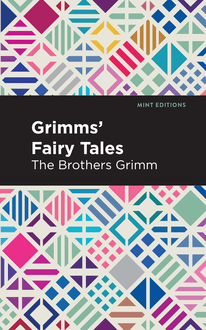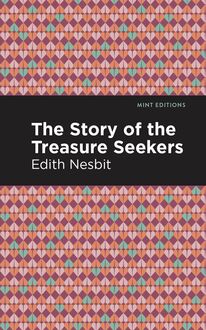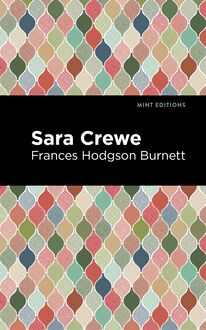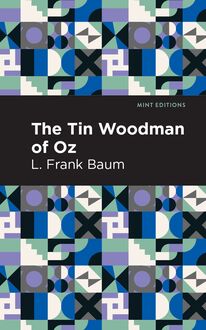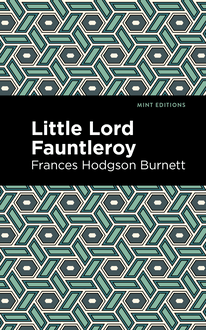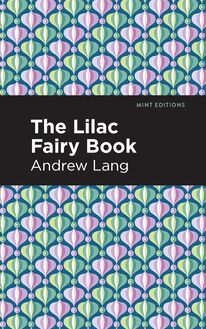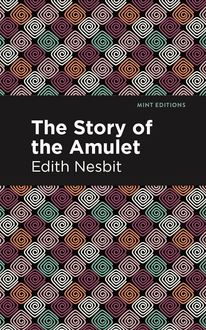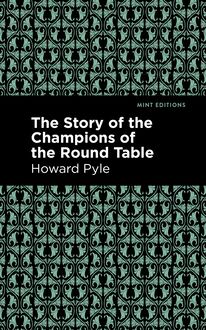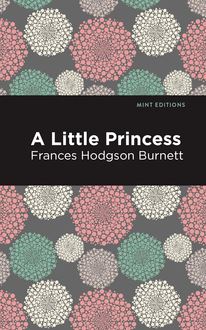-
 Univers
Univers
-
 Ebooks
Ebooks
-
 Livres audio
Livres audio
-
 Presse
Presse
-
 Podcasts
Podcasts
-
 BD
BD
-
 Documents
Documents
-
- Cours
- Révisions
- Ressources pédagogiques
- Sciences de l’éducation
- Manuels scolaires
- Langues
- Travaux de classe
- Annales de BEP
- Etudes supérieures
- Maternelle et primaire
- Fiches de lecture
- Orientation scolaire
- Méthodologie
- Corrigés de devoir
- Annales d’examens et concours
- Annales du bac
- Annales du brevet
- Rapports de stage
La lecture à portée de main
Vous pourrez modifier la taille du texte de cet ouvrage
Découvre YouScribe en t'inscrivant gratuitement
Je m'inscrisDécouvre YouScribe en t'inscrivant gratuitement
Je m'inscrisEn savoir plus
Vous pourrez modifier la taille du texte de cet ouvrage
En savoir plus

Description
Originally published in 1901, The Violet Fairy Book is a compilation of international fables from various locales including Japan, Romania, Portugal, Lithuania, Serbia and Africa. Andrew Lang delivers a comprehensive collection of some of the most beloved tales each region has to offer. The Violet Fairy Book consists of 35 wonderous children’s tales. They include magical forests, chests of gold, and a roaring dragon. This edition has popular stories such as "The Goat's Ears of the Emperor Trojan," "The Nine Pea-hens and the Golden Apples," "The Princess Who Was Hidden Underground" and "Virgilius the Sorcerer." Together, they deliver a powerful narrative of engaging and entertaining tales. The Violet Fairy Book is a follow-up to The Grey Fairy Book (1900) and The Pink Fairy Book (1897). It’s an unforgettable collection that features some of the most celebrated children’s stories of all time. With an eye-catching new cover, and professionally typeset manuscript, this edition of The Violet Fairy Book is both modern and readable.
Sujets
Informations
| Publié par | Mint Editions |
| Date de parution | 08 juin 2021 |
| Nombre de lectures | 0 |
| EAN13 | 9781513286679 |
| Langue | English |
| Poids de l'ouvrage | 1 Mo |
Informations légales : prix de location à la page 0,0500€. Cette information est donnée uniquement à titre indicatif conformément à la législation en vigueur.
Extrait
The Violet Fairy Book
Andrew Lang
The Violet Fairy Book was first published in 1906.
This edition published by Mint Editions 2021.
ISBN 9781513281650 | E-ISBN 9781513286679
Published by Mint Editions®
minteditionbooks.com
Publishing Director: Jennifer Newens
Design & Production: Rachel Lopez Metzger
Project Manager: Micaela Clark
Typesetting: Westchester Publishing Services
C ONTENTS P REFACE A T ALE OF THE T ONTLAWALD T HE FINEST L IAR IN THE W ORLD T HE S TORY OF THREE W ONDERFUL B EGGARS S CHIPPEITARO T HE T HREE P RINCES AND THEIR B EASTS (L ITHUANIAN F AIRY T ALE ) T HE G OAT ’ S E ARS OF THE E MPEROR T ROJAN T HE N INE P EA - HENS AND THE G OLDEN A PPLES T HE L UTE P LAYER T HE G RATEFUL P RINCE T HE C HILD WHO CAME FROM AN E GG S TAN B OLOVAN T HE T WO F ROGS T HE S TORY OF A G AZELLE H OW A F ISH SWAM IN THE A IR AND A H ARE IN THE W ATER T WO IN A S ACK T HE E NVIOUS N EIGHBOUR T HE F AIRY OF THE D AWN T HE E NCHANTED K NIFE J ESPER WHO HERDED THE H ARES T HE U NDERGROUND W ORKERS T HE H ISTORY OF D WARF L ONG N OSE T HE N UNDA , E ATER OF P EOPLE T HE S TORY OF H ASSEBU T HE M AIDEN WITH THE W OODEN H ELMET T HE M ONKEY AND THE J ELLY - FISH T HE H EADLESS D WARFS T HE YOUNG M AN WHO WOULD HAVE HIS E YES OPENED T HE B OYS WITH THE G OLDEN S TARS T HE F ROG T HE P RINCESS WHO WAS HIDDEN U NDERGROUND T HE G IRL WHO PRETENDED TO BE A B OY T HE S TORY OF H ALFMAN T HE P RINCE WHO WANTED TO SEE THE W ORLD V IRGILIUS THE S ORCERER M OGARZEA AND HIS S ON
P REFACE
The Editor takes this opportunity to repeat what he has often said before, that he is not the author of the stories in the Fairy Books; that he did not invent them “out of his own head.” He is accustomed to being asked, by ladies, “Have you written anything else except the Fairy Books?” He is then obliged to explain that he has N OT written the Fairy Books, but, save these, has written almost everything else, except hymns, sermons, and dramatic works.
The stories in this Violet Fairy Book, as in all the others of the series, have been translated out of the popular traditional tales in a number of different languages. These stories are as old as anything that men have invented. They are narrated by naked savage women to naked savage children. They have been inherited by our earliest civilised ancestors, who really believed that beasts and trees and stones can talk if they choose, and behave kindly or unkindly. The stories are full of the oldest ideas of ages when science did not exist, and magic took the place of science. Anybody who has the curiosity to read the “Legendary Australian Tales,” which Mrs. Langloh Parker has collected from the lips of the Australian savages, will find that these tales are closely akin to our own. Who were the first authors of them nobody knows—probably the first men and women. Eve may have told these tales to amuse Cain and Abel. As people grew more civilised and had kings and queens, princes and princesses, these exalted persons generally were chosen as heroes and heroines. But originally the characters were just “a man,” and “a woman,” and “a boy,” and “a girl,” with crowds of beasts, birds, and fishes, all behaving like human beings. When the nobles and other people became rich and educated, they forgot the old stories, but the country people did not, and handed them down, with changes at pleasure, from generation to generation. Then learned men collected and printed the country people’s stories, and these we have translated, to amuse children. Their tastes remain like the tastes of their naked ancestors, thousands of years ago, and they seem to like fairy tales better than history, poetry, geography, or arithmetic, just as grown-up people like novels better than anything else.
This is the whole truth of the matter. I have said so before, and I say so again. But nothing will prevent children from thinking that I invented the stories, or some ladies from being of the same opinion. But who really invented the stories nobody knows; it is all so long ago, long before reading and writing were invented. The first of the stories actually written down, were written in Egyptian hieroglyphs, or on Babylonian cakes of clay, three or four thousand years before our time.
Of the stories in this book, Miss Blackley translated “Dwarf Long Nose,” “The Wonderful Beggars,” “The Lute Player,” “Two in a Sack,” and “The Fish that swam in the Air.” Mr. W. A. Craigie translated from the Scandinavian, “Jasper who herded the Hares.” Mrs. Lang did the rest.
Some of the most interesting are from the Roumanion, and three were previously published in the late Dr. Steere’s “Swahili Tales.” By the permission of his representatives these three African stories have here been abridged and simplified for children.
A T ALE OF THE T ONTLAWALD 1
Long, long ago there stood in the midst of a country covered with lakes a vast stretch of moorland called the Tontlawald, on which no man ever dared set foot. From time to time a few bold spirits had been drawn by curiosity to its borders, and on their return had reported that they had caught a glimpse of a ruined house in a grove of thick trees, and round about it were a crowd of beings resembling men, swarming over the grass like bees. The men were as dirty and ragged as gipsies, and there were besides a quantity of old women and half-naked children.
One night a peasant who was returning home from a feast wandered a little farther into the Tontlawald, and came back with the same story. A countless number of women and children were gathered round a huge fire, and some were seated on the ground, while others danced strange dances on the smooth grass. One old crone had a broad iron ladle in her hand, with which every now and then she stirred the fire, but the moment she touched the glowing ashes the children rushed away, shrieking like night owls, and it was a long while before they ventured to steal back. And besides all this there had once or twice been seen a little old man with a long beard creeping out of the forest, carrying a sack bigger than himself. The women and children ran by his side, weeping and trying to drag the sack from off his back, but he shook them off, and went on his way. There was also a tale of a magnificent black cat as large as a foal, but men could not believe all the wonders told by the peasant, and it was difficult to make out what was true and what was false in his story. However, the fact remained that strange things did happen there, and the King of Sweden, to whom this part of the country belonged, more than once gave orders to cut down the haunted wood, but there was no one with courage enough to obey his commands. At length one man, bolder than the rest, struck his axe into a tree, but his blow was followed by a stream of blood and shrieks as of a human creature in pain. The terrified woodcutter fled as fast as his legs would carry him, and after that neither orders nor threats would drive anybody to the enchanted moor.
A few miles from the Tontlawald was a large village, where dwelt a peasant who had recently married a young wife. As not uncommonly happens in such cases, she turned the whole house upside down, and the two quarrelled and fought all day long.
By his first wife the peasant had a daughter called Elsa, a good quiet girl, who only wanted to live in peace, but this her stepmother would not allow. She beat and cuffed the poor child from morning till night, but as the stepmother had the whip-hand of her husband there was no remedy.
For two years Elsa suffered all this ill-treatment, when one day she went out with the other village children to pluck strawberries. Carelessly they wandered on, till at last they reached the edge of the Tontlawald, where the finest strawberries grew, making the grass red with their colour. The children flung themselves down on the ground, and, after eating as many as they wanted, began to pile up their baskets, when suddenly a cry arose from one of the older boys:
“Run, run as fast as you can! We are in the Tontlawald!”
Quicker than lightning they sprang to their feet, and rushed madly away, all except Elsa, who had strayed farther than the rest, and had found a bed of the finest strawberries right under the trees. Like the others, she heard the boy’s cry, but could not make up her mind to leave the strawberries.
“After all, what does it matter?” thought she. “The dwellers in the Tontlawald cannot be worse than my stepmother”; and looking up she saw a little black dog with a silver bell on its neck come barking towards her, followed by a maiden clad all in silk.
“Be quiet,” said she; then turning to Elsa she added: “I am so glad you did not run away with the other children. Stay here with me and be my friend, and we will play delightful games together, and every day we will go and gather strawberries. Nobody will dare to beat you if I tell them not. Come, let us go to my mother”; and taking Elsa’s hand she led her deeper into the wood, the little black dog jumping up beside them and barking with pleasure.
Oh! what wonders and splendours unfolded themselves before Elsa’s astonished eyes! She thought she really must be in Heaven. Fruit trees and bushes loaded with fruit stood before them, while birds gayer than the brightest butterfly sat in their branches and filled the air with their song. And the birds were not shy, but let the girls take them in their hands, and stroke their gold and silver feathers. In the centre of the garden was the dwelling-house, shining with glass and precious stones, and in the doorway sat a woman in rich garments, who turned to Elsa’s companion and asked:
“What sort of a guest are you bringing to me?”
“I found her alone in the wood,” replied her daughter, “and brought her back with me for a companion. You will let her stay?”
The mother laughed, but said nothing, only she looked Elsa up and down sharply. Then she told the girl to come near, and stroked he
-
 Univers
Univers
-
 Ebooks
Ebooks
-
 Livres audio
Livres audio
-
 Presse
Presse
-
 Podcasts
Podcasts
-
 BD
BD
-
 Documents
Documents
-
Jeunesse
-
Littérature
-
Ressources professionnelles
-
Santé et bien-être
-
Savoirs
-
Education
-
Loisirs et hobbies
-
Art, musique et cinéma
-
Actualité et débat de société
-
Jeunesse
-
Littérature
-
Ressources professionnelles
-
Santé et bien-être
-
Savoirs
-
Education
-
Loisirs et hobbies
-
Art, musique et cinéma
-
Actualité et débat de société
-
Actualités
-
Lifestyle
-
Presse jeunesse
-
Presse professionnelle
-
Pratique
-
Presse sportive
-
Presse internationale
-
Culture & Médias
-
Action et Aventures
-
Science-fiction et Fantasy
-
Société
-
Jeunesse
-
Littérature
-
Ressources professionnelles
-
Santé et bien-être
-
Savoirs
-
Education
-
Loisirs et hobbies
-
Art, musique et cinéma
-
Actualité et débat de société
- Cours
- Révisions
- Ressources pédagogiques
- Sciences de l’éducation
- Manuels scolaires
- Langues
- Travaux de classe
- Annales de BEP
- Etudes supérieures
- Maternelle et primaire
- Fiches de lecture
- Orientation scolaire
- Méthodologie
- Corrigés de devoir
- Annales d’examens et concours
- Annales du bac
- Annales du brevet
- Rapports de stage
